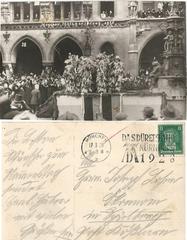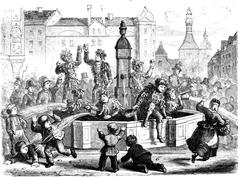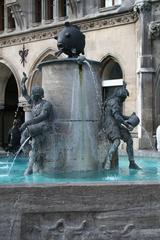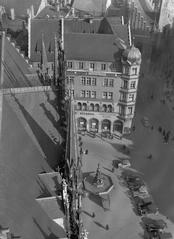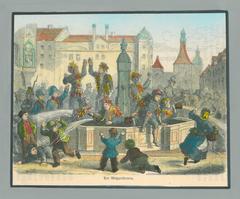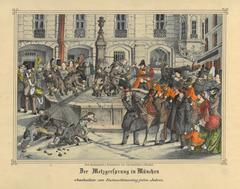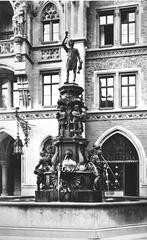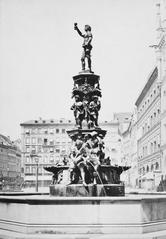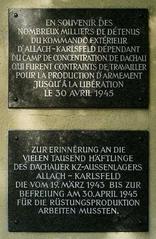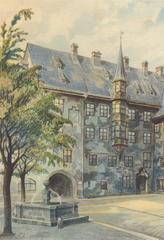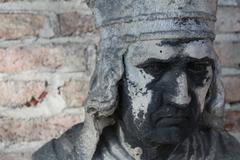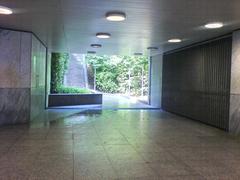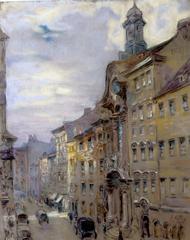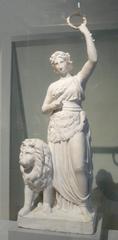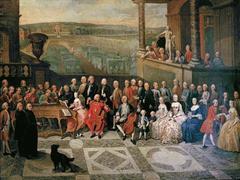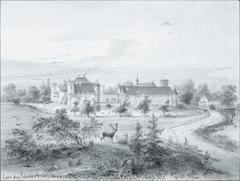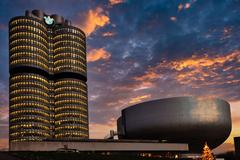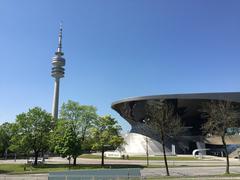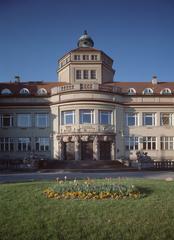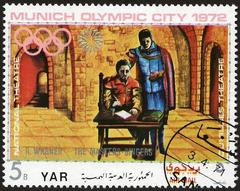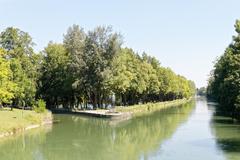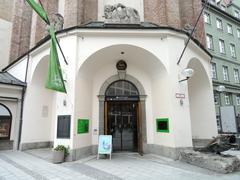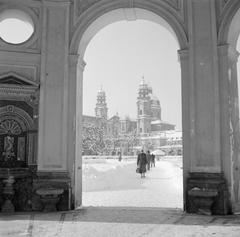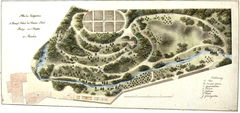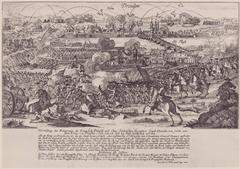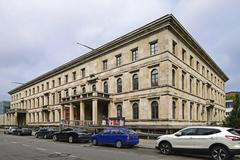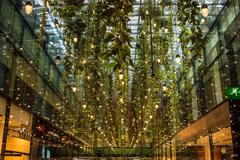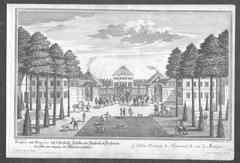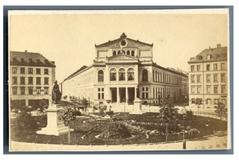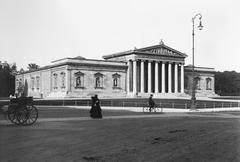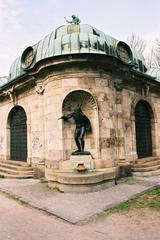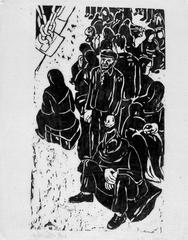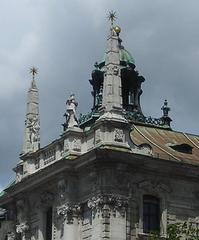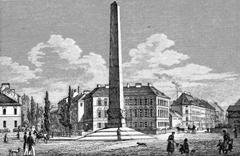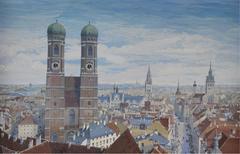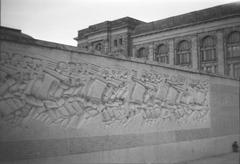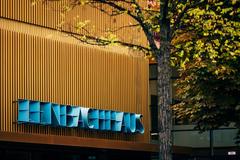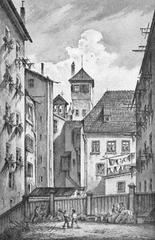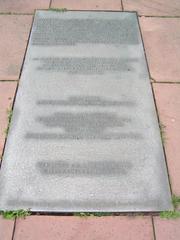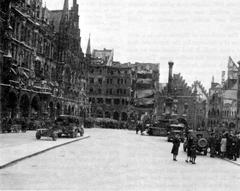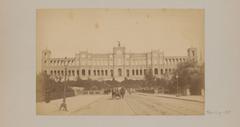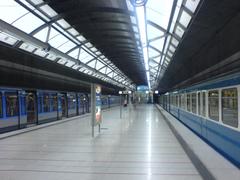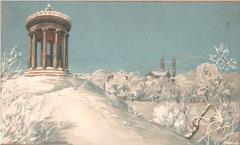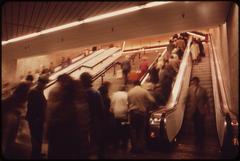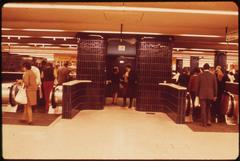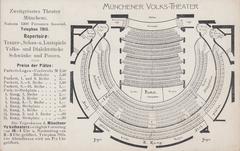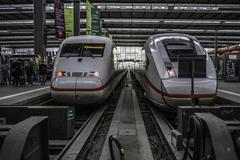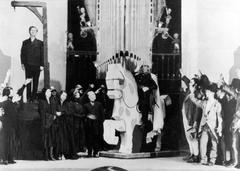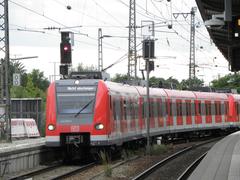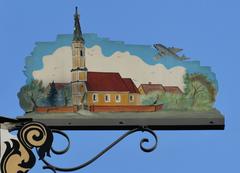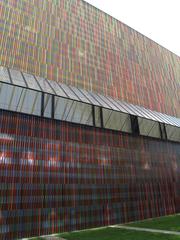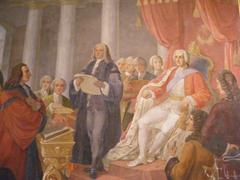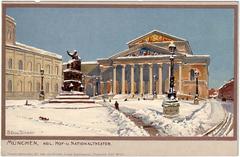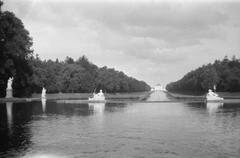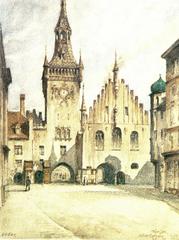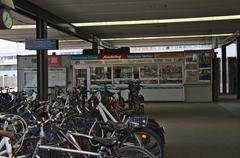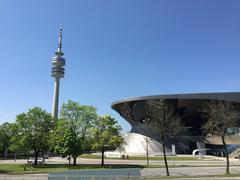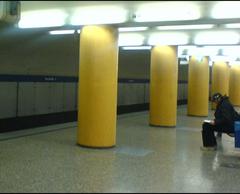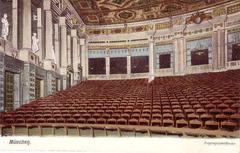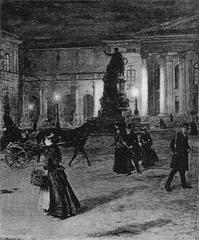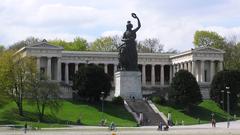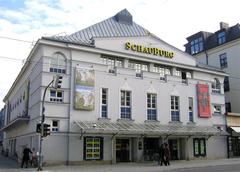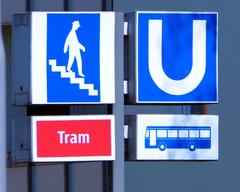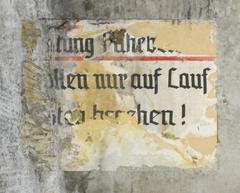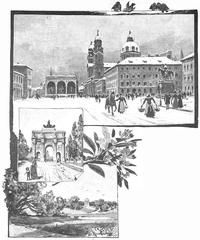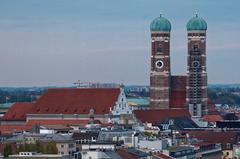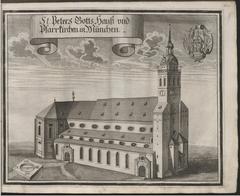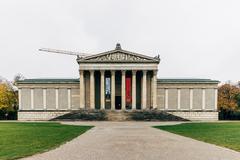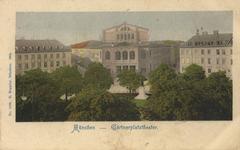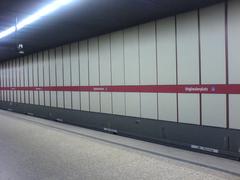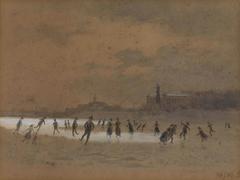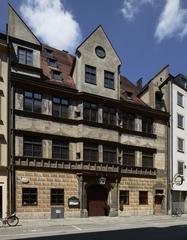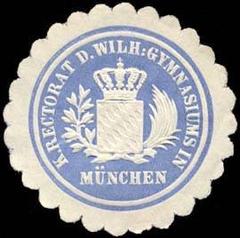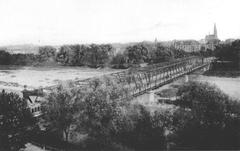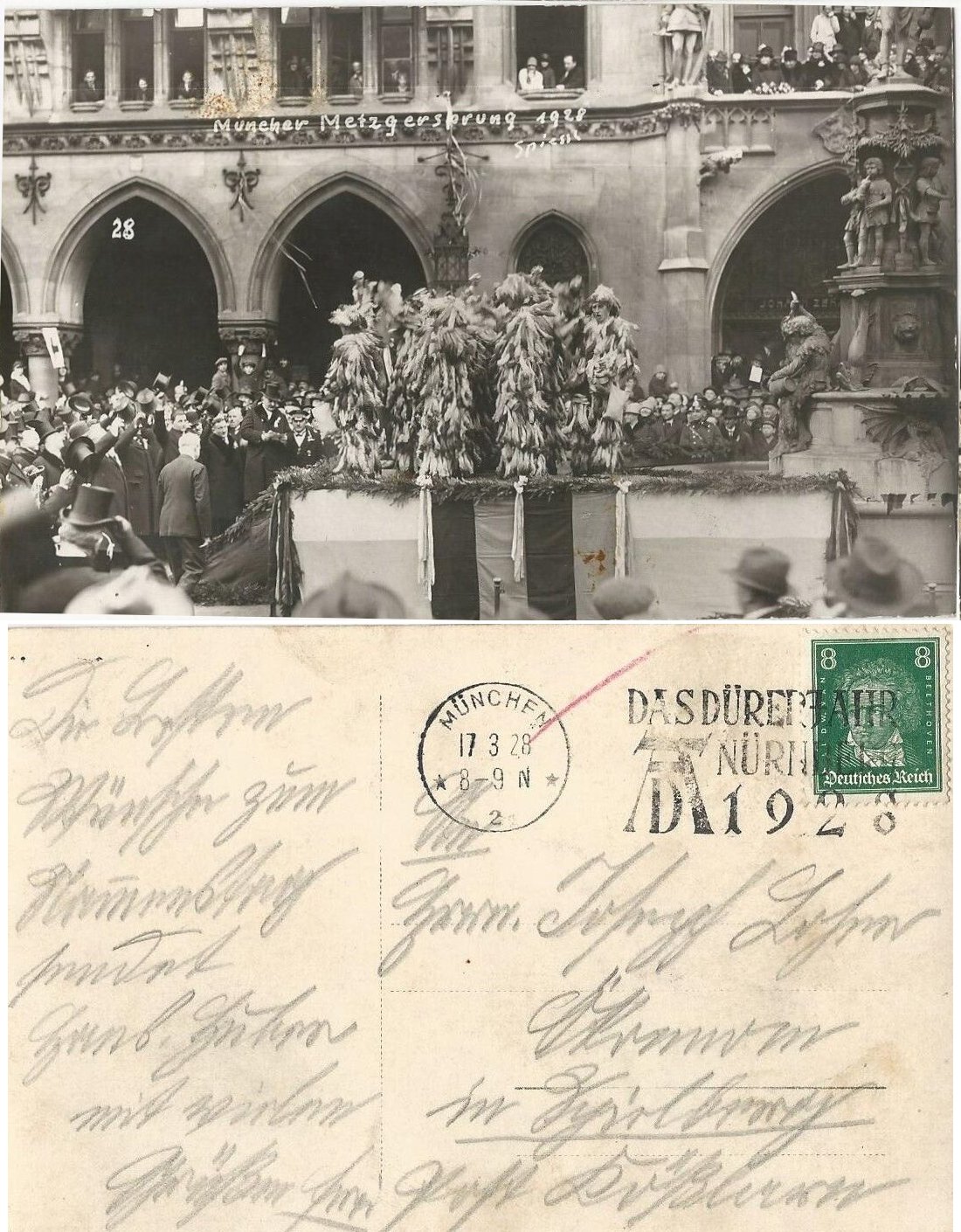
Fischbrunnen Munich Visiting Guide
Date: 19/07/2024
Introduction
Table of Contents
- Introduction
- History and Significance of the Fischbrunnen
- Visitor Information
- Nearby Attractions and Travel Tips
- Photography Tips
- Nearby Restaurants and Cafes
- Accessibility
- Practical Information
- Respectful Visiting
- FAQs
- Conclusion
History and Significance of the Fischbrunnen
The Fischbrunnen has witnessed centuries of change while remaining a constant in the city’s urban fabric.
Early Beginnings and Symbolic Significance
The Fischbrunnen’s origins can be traced back to the Middle Ages. While the exact date of its creation remains uncertain, historical records suggest the existence of a well or fountain at the site as early as the 14th century. This early iteration likely served a practical purpose, providing fresh water to the market vendors and residents of the burgeoning city.
The fountain’s association with fish also dates back to its early days. In medieval times, fish symbolized fasting and abstinence, making the fountain a significant landmark during Lent. Butchers, who were prohibited from selling meat during this period, would playfully wash their wallets in the fountain, symbolically cleansing them of any “meat money” earned. This tradition, known as “Geldbeutelwaschen” (purse washing), continues to this day, albeit in a more lighthearted and ceremonial form.
Transformations and Reincarnations
The Fischbrunnen, like Munich itself, underwent several transformations throughout the centuries. The original medieval structure was replaced in the 17th century with a Renaissance-style fountain designed by Friedrich Sustris. This version featured an octagonal basin adorned with eight cherubs holding fish.
However, the most significant transformation occurred in the 19th century. Under King Ludwig I of Bavaria, Munich experienced a period of significant architectural renewal. As part of this urban redesign, the renowned architect Konrad Eberhard was commissioned to create a new fountain for Marienplatz. Eberhard drew inspiration from the earlier Renaissance fountain but incorporated elements of Neo-Gothic style, resulting in the Fischbrunnen we see today.
The Fischbrunnen Today - A Blend of Old and New
Eberhard’s Fischbrunnen, completed in 1866, features a three-tiered structure crafted from bronze. The lower basin, reminiscent of the original well, is adorned with four whimsical water-spouting fish. Above this basin stand four musicians, each representing a different guild associated with water - a fisherman, a water carrier, a hydraulic engineer, and a salt-seller.
Crowning the fountain is the bronze statue of a young apprentice butcher, known as the “Brunnenbuberl” (fountain boy). This figure, clutching a fish in one hand and appearing to tumble into the water, is a playful nod to the tradition of Geldbeutelwaschen.
Visitor Information
- Visiting Hours: The Fischbrunnen is accessible 24/7, but the best time to visit is during daylight hours to fully appreciate its architectural details.
- Tickets: There is no entry fee to visit the Fischbrunnen.
- Accessibility: The site is wheelchair accessible and easily reachable by public transport.
Nearby Attractions and Travel Tips
While visiting the Fischbrunnen, take the opportunity to explore nearby attractions such as the New Town Hall, St. Peter’s Church, and the Viktualienmarkt. Consider joining a guided tour to gain deeper insights into Munich’s rich history and culture. Don’t forget to carry a camera to capture the stunning architecture and lively atmosphere.
Photography Tips
- Capture the Details: Get close-up shots of the intricate bronze figures and the playful water features.
- Different Perspectives: Experiment with different angles and perspectives to create unique compositions.
- Time of Day: The fountain is particularly photogenic in the morning light and during the golden hour before sunset.
- People Watching: Capture the lively atmosphere of Marienplatz with candid shots of people interacting with the fountain.
- Special Events: During events like the Auer Dult (traditional market) or Christmas markets, the Fischbrunnen is adorned with special decorations, offering unique photo opportunities.
Nearby Restaurants and Cafes
- Ratskeller München: Located in the basement of the Neues Rathaus, this traditional restaurant offers Bavarian specialties and a historic ambiance.
- Augustiner-Keller: Enjoy traditional Bavarian food and beer in a lively beer garden setting, just a short walk from Marienplatz.
- Café Glockenspiel: Situated directly opposite the Neues Rathaus, this café offers prime views of the Glockenspiel show and a cozy atmosphere.
- Viktualienmarkt Stände: Grab a quick bite or a leisurely lunch from the various food stalls at the Viktualienmarkt, offering a wide range of cuisines.
Accessibility
The Fischbrunnen and the surrounding Marienplatz area are generally accessible to visitors with disabilities.
- Wheelchair Access: The area around the fountain is paved and relatively flat, allowing for wheelchair access.
- Public Transportation: Munich’s public transportation system is well-equipped for passengers with disabilities.
- Accessible Restrooms: Public restrooms with accessible facilities are available in the vicinity of Marienplatz.
Practical Information
- Admission: The Fischbrunnen is free to visit at any time.
- Guided Tours: While not specifically focused on the Fischbrunnen, several guided walking tours of Munich’s city center include Marienplatz and provide historical context.
- Souvenirs: Find miniature replicas of the Fischbrunnen and other Munich-themed souvenirs at shops around Marienplatz.
- Safety: Marienplatz is generally a safe area, but it’s always advisable to be aware of your surroundings and keep your belongings secure, especially during crowded times.
Respectful Visiting
- Avoid Climbing: Refrain from climbing on the fountain or its sculptures to prevent damage and ensure everyone’s safety.
- Dispose of Trash Properly: Help keep the area clean and enjoyable for everyone by using designated trash bins.
- Be Mindful of Others: During crowded times, be considerate of other visitors and allow everyone to enjoy the fountain.
FAQs
Q: What are the visiting hours for the Fischbrunnen?
A: The Fischbrunnen is accessible 24/7, making it a perfect spot for both early morning and late evening visits.
Q: Do I need to buy tickets to visit the Fischbrunnen?
A: No, visiting the Fischbrunnen is free of charge.
Q: Are there any special events held at the Fischbrunnen?
A: Yes, the Fischbrunnen is often decorated specially during events like the Auer Dult and Christmas markets, providing unique photo opportunities.
Q: How can I learn more about the history of the Fischbrunnen?
A: Consider joining a guided walking tour of Munich’s city center, which often includes a stop at the Fischbrunnen and provides historical context.
